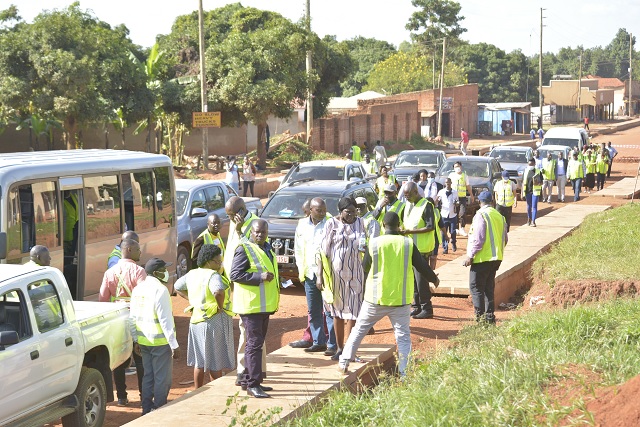
Gulu, Uganda | THE INDEPENDENT | With a population of 330,000 residents, Gulu City is the largest metropolis in Northern Uganda, which further points to one among the new cities that is inclined to endure a very high rate of urbanization.
This is the position of the Uganda Support to Municipal Infrastructure Development-USMID, a World Bank funded programme seeking to improve on infrastructure within urban centres; largely the 10 new cities and 22 other municipalities.
“This particular sub region has been disadvantaged before due to the previous decades of armed conflict. With peace as it is now, infrastructure needs to be scaled in Gulu (now City) and that explains why of all the urban centres under USMID support, Gulu, obtained the highest amount of funding (42B),” said Dr Kenneth Kayom, a Senior Urban Specialist with USMID-AF.
A team of law makers drawn from Parliament’s Committee on National Economy are currently inspecting the road infrastructure projects in Gulu city under USMID-AF to ascertain the actual performance on the ground for debt financed projects.
“We cannot keep on approving loans for infrastructure projects, which end up not performing according to the expectations of both donors and tax payers,” said John Ikojo, the Chairperson of the Committee on National Economy during the field visit in Gulu City.
“We want to see whether these new Cities and Municipalities are properly utilising these resources as appropriated.”
Ikojo said the $360M dollars received by the Ministry of Lands, Housing and Urban Development and channeled to the implementing agencies under USMID, is a very colossal sum of money on loan from the World Bank and must be fully accounted for.
“We obtained this loan in 2018/2019, this project ends in 2022/2023, as a committee we would like to check whether this loan ($360m) is performing according to the guidelines. Improving the infrastructure in these urban areas is supposed to improve on the business environment, tax collection and better incomes,” he said.
Gulu City is one among the oldest commercial centres in Uganda since independence in 1962. However, the civil conflict occasioned by the Lords Resistance Army affected development.
But being the gateway to the neighbouring South Sudan and DR Congo, Gulu City’s new regional business hub under construction through funding by TradeMark EastAfrica, is also expected to improve trade and commerce, riding on the current infrastructure undertakings.
Out of the Shs 42 billion allocated to Gulu under the USMID programme, 11.7km of roads have been tarmacked including street lighting drainage and various access roads, according to the Dr. Kenneth Kayom, the Senior Urban Specialist with USMID.
Paulo Akena, a real estate dealer in Gulu, says the new infrastructure within the city centres has stimulated the value of commercial and residential real estate. “We have plots of land in the town centre measuring 12 decimals which is now selling at half a billion shillings. Developers are also improving the (architectural) designs of their buildings. The next 10 years are bright,” he said.
He says the quality of residential areas are also improving in the quality of houses and so is the quality of living for the residence.
Nevertheless, there remains high pressure for more funding to ensure the newly annexed villages neighbouring the former Gulu Municipality are also developed with paved road network.
China Railway 18 Group is currently constructing the additional 6 roads measuring 7.7km in two of Gulu City’s Divisions. Among the roads being carpeted are Opiyo, Oola Labaru, Onono, Nelson Mandela and Lakana.
 The Independent Uganda: You get the Truth we Pay the Price
The Independent Uganda: You get the Truth we Pay the Price



